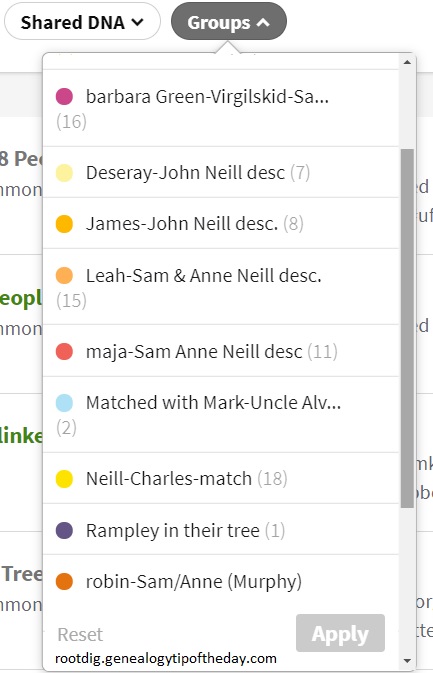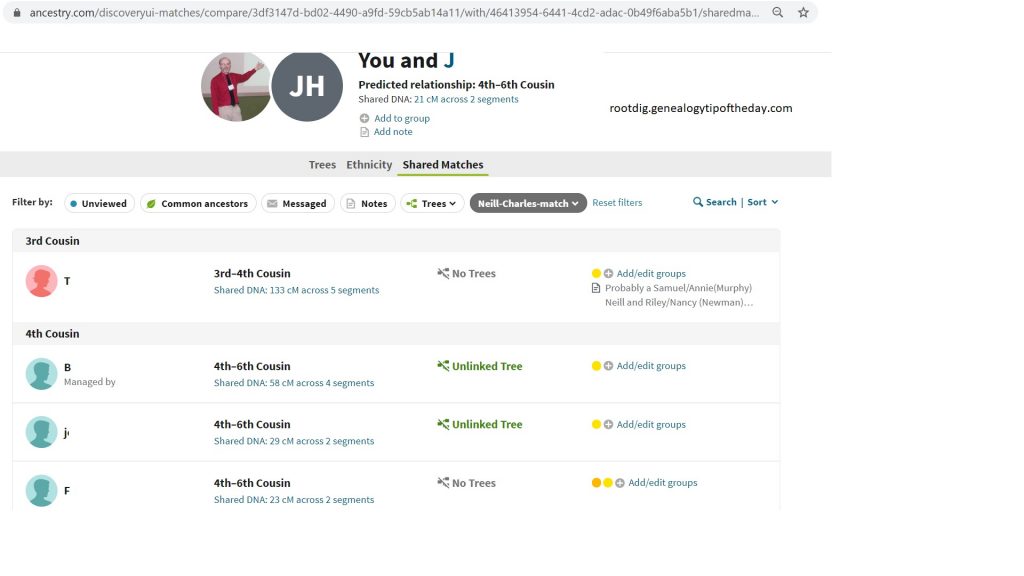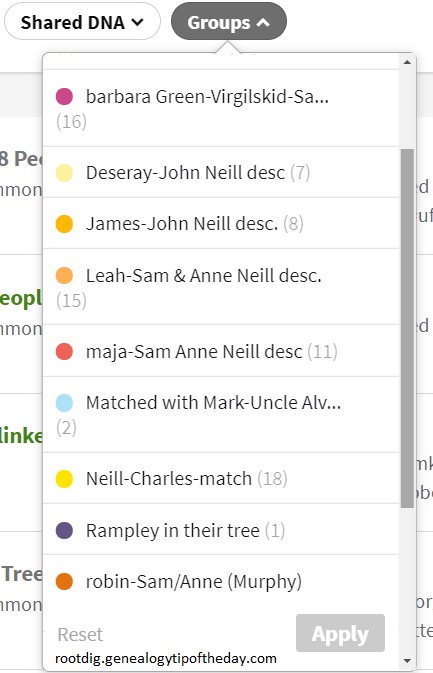One reason I took a DNA test was so that I could make some discoveries on my Irish immigrant families. Consequently I’ve focused on DNA matches to known descendants of my Irish immigrant ancestors.
Samuel and Annie (Murphy) Neill were Irish immigrants (probably from different places) who married in New Brunswick, Canada, in the 1860s. They moved to Hancock County, Illinois, where Samuel’s brother Joseph and Annie (Brice) Neill also settled. The Neills presumably went there because Annie Brice had relatives in the area. Joseph and Annie were from the same area and had married in Ireland. Joseph and Annie had several children, but none of those children had families of their own. Joseph and Samuel had a brother Alexander who remained in Ireland and who has descendants, some of whom have done DNA tests. Samuel and Annie had several children and approximately twenty descendants who have done DNA tests.
My plan with my DNA matches was to look for individuals who were shared matches with known descendants of Samuel and Annie. There is a problem. Three of Samuel and Annie’s children (including my great-grandfather) married individuals from the Rampley family who shared 6 of the same great-grandparents (it is possible). The multiple relationships I share with these Neill-Rampley descendants was why I chose to use Neill descendants from the non-Rampley marriages for my DNA analysis. Shared DNA matches with known descendants of the non-Neill-Rampley marriages were likely related to me through the Neill or Murphy families.
This situation is a great example of why it is advised to know as much about your paper genealogical tree as possible.
I started with the matches I shared with known descendants of Samuel and Annie (Murphy) Neill who had also done DNA tests at Ancestry. I assigned a group color to matches of these descendants in AncestryDNA. The names are coded to make sense to me–note: the blue groups have nothing to do with the Neill analysis.

It took a little doing creating a group for the shared matches I had with each of these determined matches, but it was helpful. Then when viewing new matches or matches I did not have determined, I could see a little better what was going on.

Then I could see that a undetermined match, J, had four shared matches with me and that all of those shared matches with J were shared matches with known Neill-Murphy descendants.
I only used the groups (the colored dots) to indicate matches with matches whose relationship with me through the Neill-Murphy (non-Rampley) family were known. Some individuals who matched were descendants of one of Neill-Rampley intermarriages, but again, because of multiple relationships with those individuals, I did not use those matches in my analysis.
Through the analysis, I was able to determine another sibling for Samuel and Joseph. Basically this was accomplished by looking at individuals who in several match groups with known Samuel Neill descendants, who shared less DNA with me than the Samuel Neill descendants, and had at least a few names in their attached pedigree chart. “Less DNA” is very loosely defined and we will look at that in a future post. It took some time to trace their pedigree to determine the connection.


No responses yet